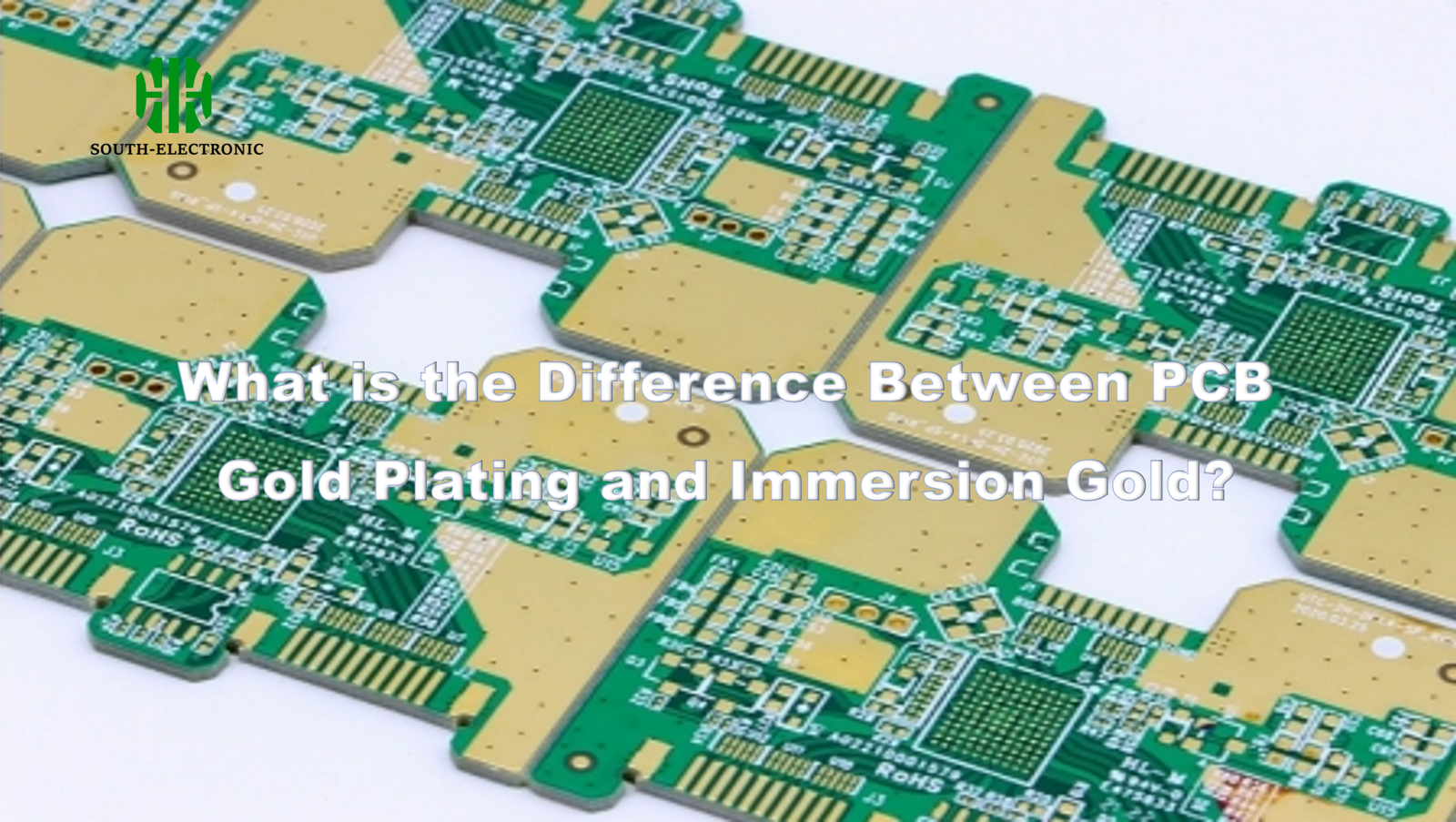Gold-plated boards and gold-plated boards are commonly used processes for PCB circuit boards. Many readers cannot correctly distinguish the difference between the two, and some customers even think that there is no difference between the two.
So what kind of impact will these two "gold boards" have on the circuit board? Let me explain it to you in detail below to help you thoroughly understand the concept.
What is gold plating?
What we call whole-board gold plating generally refers to "electroplated gold", "electroplated nickel-gold board", "electrolytic gold", "electro-gold", and "electro-nickel-gold board", which is divided into soft gold and hard gold (generally hard gold is used for gold fingers).
The principle is to dissolve nickel and gold (commonly known as gold salt) in chemical solutions, immerse the circuit board in the electroplating tank and connect the current to generate a nickel-gold coating on the copper foil surface of the circuit board. Electro-nickel-gold is widely used in electronic products because of its high hardness, wear resistance, and non-oxidation advantages.

What is gold plating?
Immersion gold is a coating generated by chemical oxidation-reduction reaction. It is generally thicker and is a method of chemical nickel-gold deposition. It can achieve a thicker gold layer.
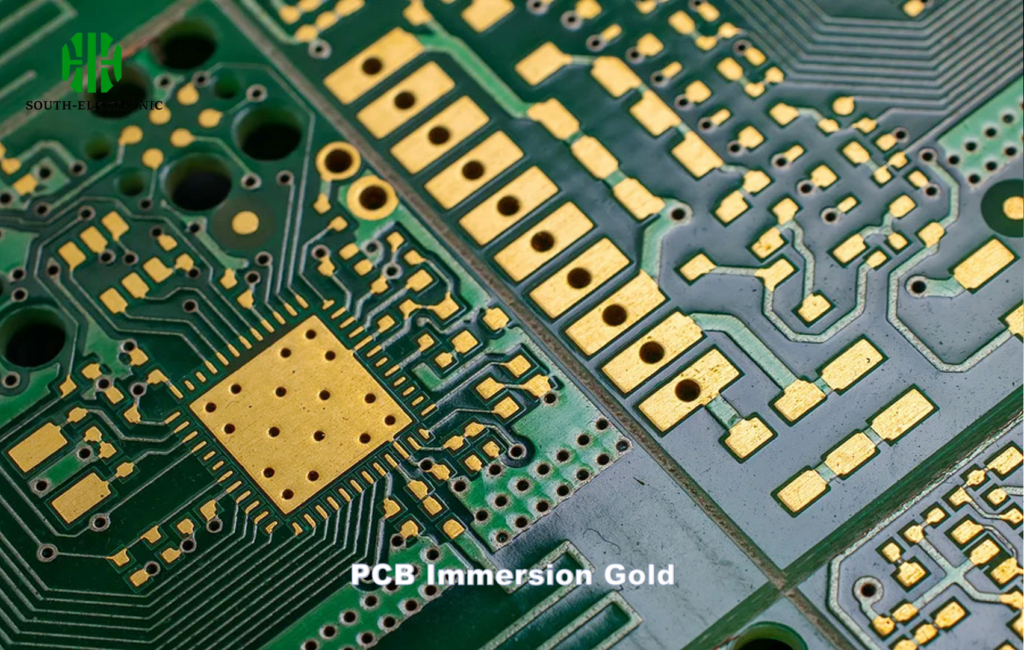
The difference between PCB immersion gold board and gold-plated board
- Generally, the thickness of gold for immersion gold is much thicker than that for gold plating. Immersion gold will be golden yellow, which is yellower than gold plating. Customers are more satisfied with immersion gold on the surface. The crystal structures formed by the two are different.
- Due to the different crystal structures formed by immersion gold and gold plating, immersion gold is easier to weld than gold plating, and will not cause poor welding and customer complaints. At the same time, because immersion gold is softer than gold plating, gold-plated gold finger boards are generally selected, and hard gold is wear-resistant.
- There is only nickel gold on the pad of the immersion gold board. The transmission of the signal in the skin effect is on the copper layer and will not affect the signal.
- The crystal structure of immersion gold is denser than that of gold plating, and it is not easy to produce oxidation.
- As the wiring becomes denser and denser, the line width and spacing have reached 3-4MIL. Gold plating is prone to gold wire short circuit. The immersion gold board only has nickel gold on the pad, so it will not produce gold wire short circuit.
- The immersion gold board only has nickel gold on the pad, so the solder mask on the circuit is more firmly combined with the copper layer. The project will not affect the spacing when making compensation.
- It is generally used for boards with relatively high requirements. The flatness should be good. Generally, immersion gold is used. Immersion gold generally does not have the black pad phenomenon after assembly. The flatness and standby life of the immersion gold board are as good as those of the gold-plated board.
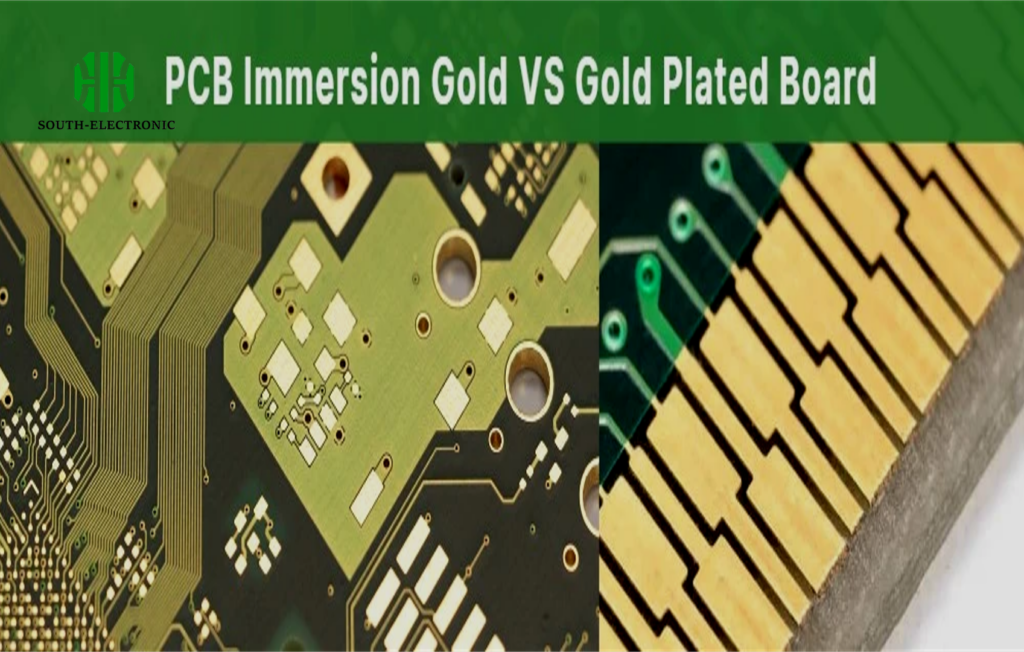
The above is the difference between the immersion gold board and the gold-plated board. Now the price of gold is expensive in the market. In order to save costs, many manufacturers are no longer willing to produce gold-plated boards, but only make immersion gold boards with nickel gold on the pads, which are indeed much cheaper in price.
The difference between the characteristics of immersion gold board and gold-plated board:
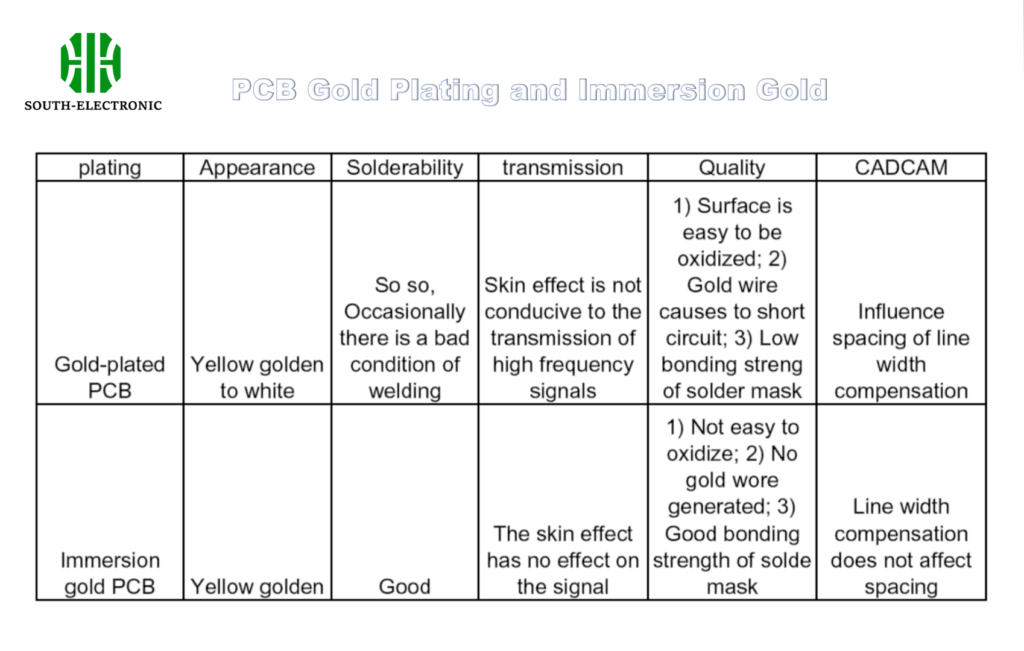
Immersion gold board and gold-plated board:
- Immersion gold board and gold-plated board are the same process products, and electroplated gold board and gold-flash board are also the same process products. In fact, they are just different names for different people in the PCB industry. Immersion gold board and electroplated gold board are more common in mainland peers, while gold-plated board and gold-flash board are more common in Taiwan peers.
- The more formal name of immersion gold board/gold-plated board is chemical nickel-gold board or nickel-immersion gold board. The growth of nickel/gold layer is plated by chemical deposition; gold-electroplated gold board/gold-flash board is generally more formally called electroplated nickel-gold board or gold-flash board. The growth of nickel/gold layer is plated by direct current electroplating.
- The difference in the mechanism of chemical nickel-gold board (immersion gold) and electroplated nickel-gold board (gold plating) is shown in the following table:
Why is "tin spraying" generally not used?
As the integration of ICs becomes higher and higher, the number of IC pins is also increasing. It is difficult to flatten the thin pads with vertical tin spraying process, which makes SMT mounting difficult; in addition, the shelf life of tin spraying board is very short. Gold-plated board solves these problems:
- For surface mounting process, especially for 0603 and 0402 ultra-small surface mounting, because the flatness of the pad is directly related to the quality of the solder paste printing process, it has a decisive influence on the quality of the subsequent reflow soldering, so the whole board is often gold-plated in high-density and ultra-small surface mounting process.

- In the trial production stage, due to factors such as component procurement, it is often not soldered immediately after the board arrives, but often takes several weeks or even months to use. The shelf life of gold-plated board is many times longer than that of lead-tin alloy, so everyone is happy to use it. Besides, the cost of gold-plated PCB in the sample stage is almost the same as that of lead-tin alloy board.
But as the wiring becomes more and more dense, the line width and spacing have reached 3-4MIL. Therefore, the problem of gold wire short circuit is brought about:
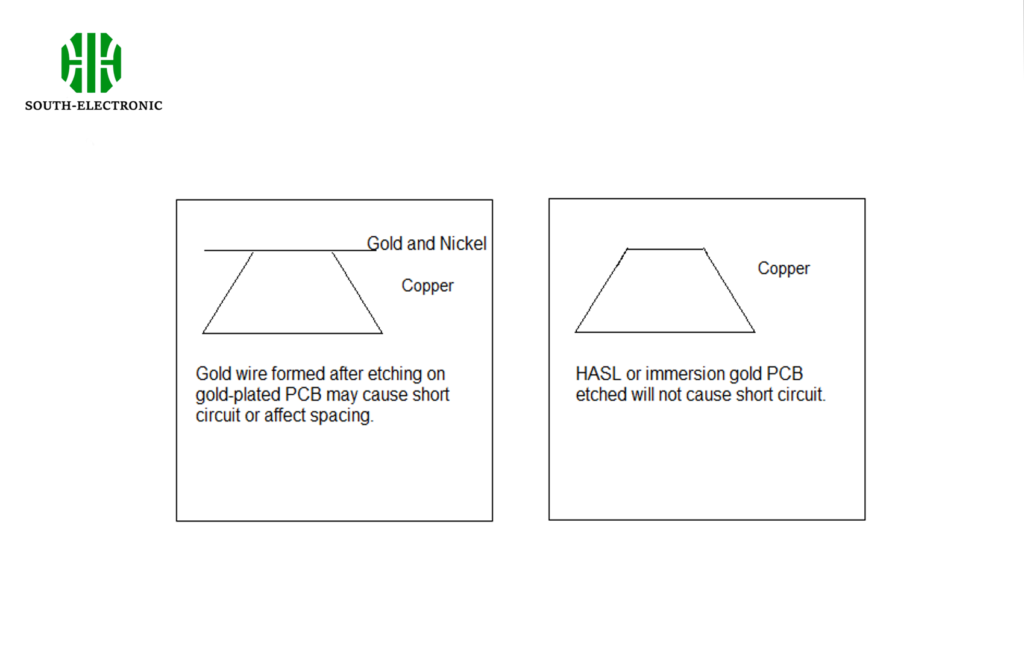
As the frequency of the signal becomes higher and higher, the skin effect causes the signal to be transmitted in multiple layers, which has a more obvious impact on the signal quality:
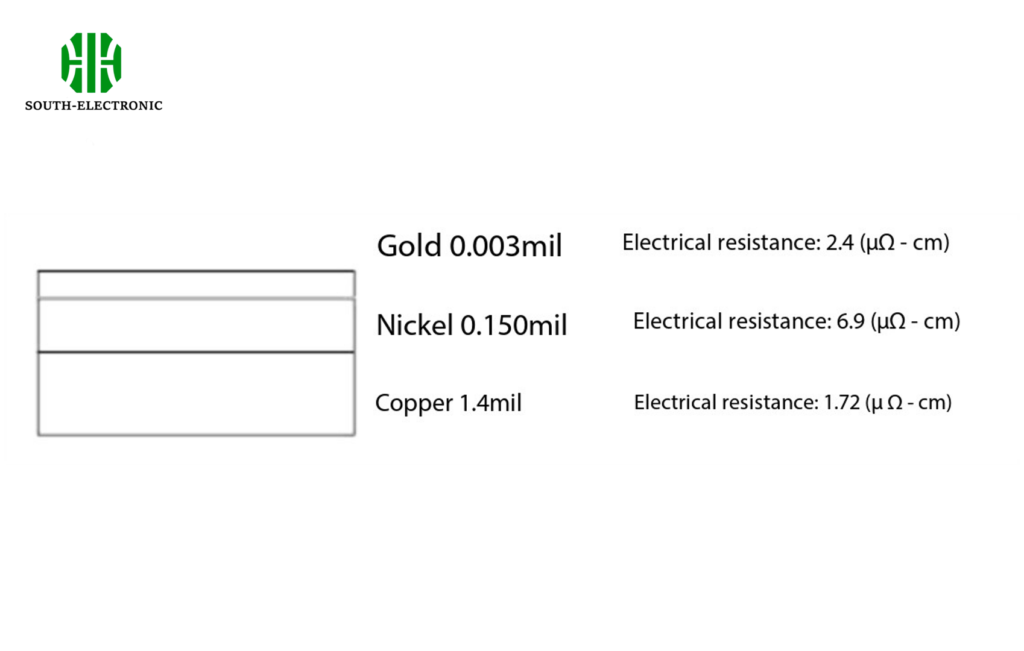
The skin effect refers to: for high-frequency alternating current, the current tends to flow on the surface of the wire.
According to calculations, the skin depth is related to the frequency:
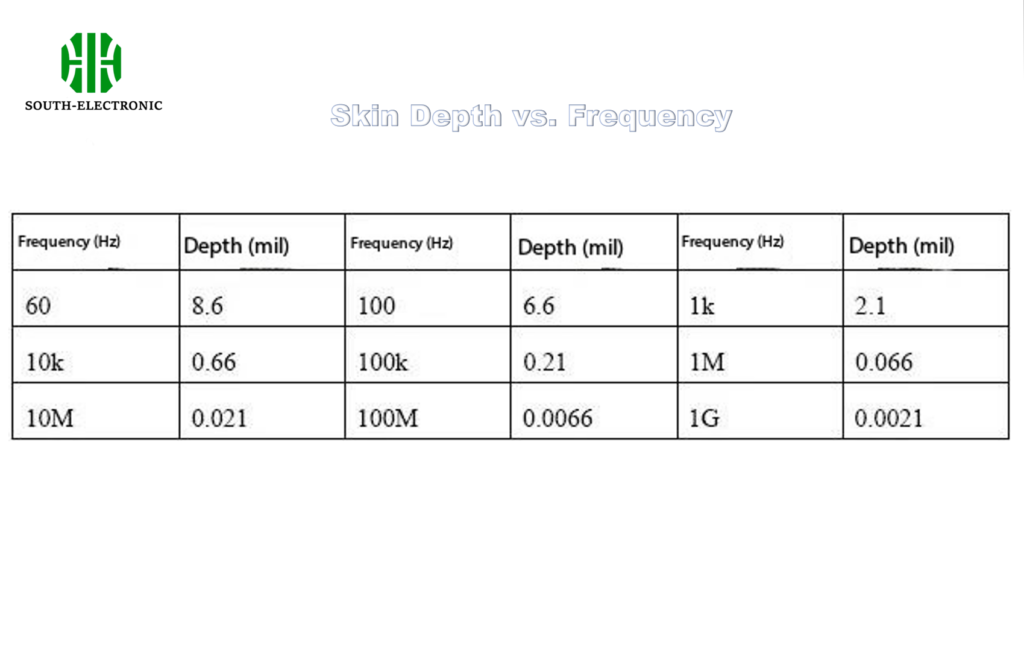
Other disadvantages of gold-plated boards are listed in the table of differences between immersion gold boards and gold-plated boards.

